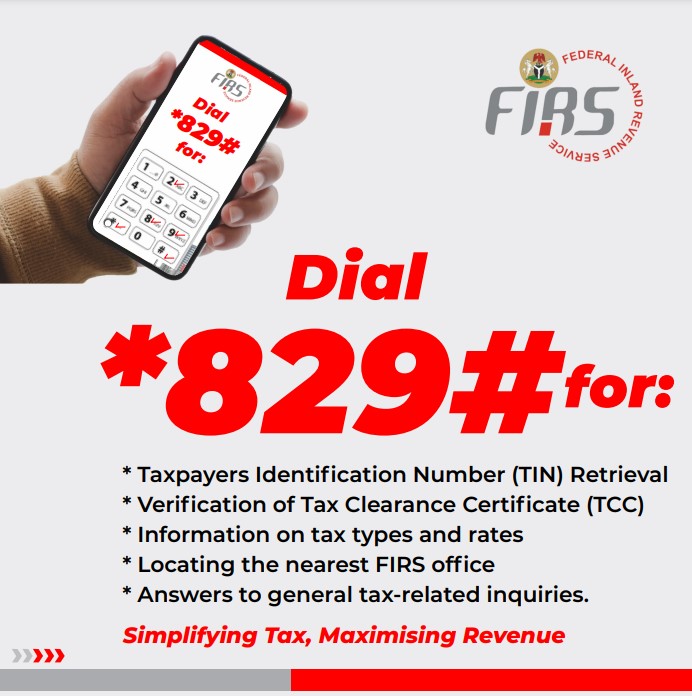Business and Brands
What a Web3 Hackathon Teaches Us About Diversity in Crypto
What a Web3 Hackathon Teaches Us About Diversity in Crypto
Last week, while taking the stage after finding out her project had won first place at a crypto hackathon, Olivia Drouhaut looked out and counted the number of Black women in the audience. “There were two,” she said, “and one was holding my phone to take a video.”
Drouhaut is a co-founder of EVOLVE, a platform built on Polygon that’s using crypto economics to teach people about investing. The project, just a “minimum viable product” as of yet, Drouhaut said, was conceived and built over the past six months as part of the Web3athon.
“When you learn about the state of financial literacy among African Americans, it’s shocking,” Drouhaut said. She recalled a particular statistic that puts inequality in the U.S. in black and white: The median wealth for women of color is just $1,700. (That’s up from $5 about a decade ago, but obviously distressing when compared to other demographics.)
There’s no simple explanation for contemporary wealth inequality in the wealthiest nation ever – it’s a result of systemic failures and countless injustices over decades. But, Drouhaut said, there could be a simple way to improve the situation: education.
“We are a community of women and allies committed to creating generational wealth through education, advancing Black and Latinx women-owned businesses and projects, investment in real estate, philanthropic contributions and collective economics to secure our place in Web3,” Drouhaut said in an email.
The guiding principle of Web3athon, a sort of crypto boot camp announced at CoinDesk’s Consensus conference in June and backed by CRADL, was to help Web3 developers projects tackle what it calls “hyperlocal” issues.
“At CRADL, we think of hyperlocal as the counterbalance to ‘mass market.’ A hyperlocal community can be geographically dispersed, but everyone in it shares something unique that keeps them small and connected,” Katherine Paseman, a project lead at CRADL, or the Crypto Research and Design Lab, said in an interview.
More than two dozen projects participated in the hackathon until the end. Many of the participants hadn’t ever coded before, Paseman said. And they were chosen if they had relevant, up-close experience with an issue.

Zooming in on problems that need solving led to some singular hackathon ideas: A team of indigenous coders built a play-to-earn app that would funnel profits into salmon restoration in the Pacific Northwest. Two Kenyan developers designed an app for a traditional African investing pool called a Chama.
These are people that know the issues intimately, Paseman said. Yet, figuring out if and how crypto could help improve the situation took time.
As mentioned, EVOLVE uses “learn-to-earn” incentives paid in its native token to teach people the basics of investing, like compound interest and direct deposits, a bit like Coinbase’s “Earn” product. Drouhaut and her team took it a step further by introducing crypto staking – to eventually allow people to participate in the protocol more fully and get hands-on experience with what they’re learning.
CRADL helped enterprising visionaries pair up coders to build the project, as well as mentoring throughout the process. The effort attracted developers from nearly every continent, building on 17 blockchains including Filecoin, Stellar and Polkadot. (The chief content officer at CoinDesk, Michael Casey, served as a judge.)
“I prefer to have women developers, preferably BIPOC [Black, Indigenous and people of color] women to give them access and the opportunity to build in the space,” Drouhaut said, noting it took time to find the right developer given the general lack of diversity in crypto.
Like most of EVOLVE’s members, Drouhaut is a part of Disruptor DAO, a decentralized autonomous organization working on financial literacy issues in Black and Latina communities, which offers opportunities to “learn by doing” and careers in Web3.
Drouhaut plans to continue working on the project now that the hackathon is finished, which will eventually be folded into Disruptor DAO as its “educational arm.” Many of the people who participated in Web3athon are actively looking to raise seed or angel investments.
For Paseman, organizing the six-month hackathon would be worth it even if most of the projects don’t go to market. It was an experience in learning to work across cultural lines and time zones, she said. Moreover, it highlighted the challenges in crypto – what it can change and what needs to change with it.
“The first step is to acknowledge that decentralization does not automatically foster diversity. Our research has shown that while Web3 values decentralization when it comes to technology, the social networks that make up this industry are not necessarily decentralized,” Paseman said.
Hackathons and conferences are some of the easiest ways for underrepresented individuals to accelerate their careers, Drouhaut said, adding that in her experience, “the [participation] and attendance rate of women of color globally [ranged] from extremely low to completely nonexistent.”
This is what attracted her, and many of the participants, to CRADL’s competition, which stressed the democratic and equalizing values in crypto.
“I want to see more women of color take space, speak, attend these conferences, network and grow professionally so they can see what’s possible for them out there. It’s all about accessibility,” Drouhaut said.
CoinDesk corresponded with Paseman over email to hear more about running an event like Web3athon, diversity in crypto and whether the next “hyperlocal” issue could be terraforming Mars. (The conversation has been lightly edited for clarity and brevity.)
What did you want to achieve by putting Web3athon together, and do you think you succeeded?
Web3athon is CoinDesk and CRADL’s attempt to inject optimism and forward momentum into the current messiness of Web3. And wow, do we need that injection.
The bear market has been a sobering comedown from the hype of the bull run. Now that the dust has settled, it’s clear that the industry has some major problems. There are exploits of poorly written protocols, an absence of real use cases (do we really need an [non-fungible token] minted for every step taken during a jog?) and speculation is rampant.
We wanted to show that it’s possible to improve the quality of the products in Web3. Our big bet was that by creating a hackathon that is welcoming for non-technical people, we’d get more well-rounded teams with both the
technical know-how and the domain expertise to build products that help real communities. And we were right.
We partnered with 13 organizations and 17 sponsors to build a cohort of attendees with a huge spread of backgrounds and skill sets. We kicked off at Consensus in June with six hours of programming designed for both technical and non-technical attendees. Over 6,000 participants registered across 17 different time zones. After three months of ideating and building, we emerged with 32 prize winners and 15 Web3athon Standouts, featuring projects doing everything from putting occupational safety data on-chain with OccSaviors to helping war photojournalists manage their work’s rights and revenue through Refound. The volume, range and quality of these projects show that with non-technical domain experts at the table, we really can build a better Web3.
Why use the hackathon format?
One of CRADL’s first research reports found that hackathons are a key way to attract builders to the industry. But while hackathons are great for bringing technical minds together, they don’t typically produce useful products.
One of the biggest reasons for that is hackathons typically attract a homogenous set of participants. Whether it’s the exclusive language often used in tech, the highly technical jargon used in marketing or having submissions that require knowing how to code, there seems to not be space for anyone who isn’t a software engineer.
We believed that if we hosted an event that was intentionally inclusive – bringing in ideas and talent from people who aren’t already in Web3 – it could produce more practical and valuable products.
By teaming up with CoinDesk, who has had a front row seat to the entire industry’s development, we knew we’d have the ability to break down these barriers, and the nuance to make a meaningful difference with Web3athon.
How can crypto/Web3 foster a more diverse industry?
The first step is to acknowledge that decentralization does not automatically foster diversity. Our research has shown that while Web3 values decentralization when it comes to technology, the social networks that make up this industry are not necessarily decentralized. It’s a global industry, but conferences seem to be the same teams networking with the same VCs [venture capitalists] in a new city every month. (CRADL will be releasing a report on diversity, equity and inclusion, or DEI, in Web3 later this year.)
At CRADL, we talk about diversity in terms of representation and power. Who has the power to determine how they are represented in Web3? Who has the agency to decide how new technologies are showing up in their communities? We partnered with organizations – like Black Bitcoin Billionaire, H.E.R. DAO, the Africa Blockchain Institute and IMPAQTO – that also value empowering their communities to engage with Web3.
The presence of those communities is one of the reasons Web3athon was able to produce projects that addressed such a wide variety of problems. Builders were able to meet new types of people, build more well-rounded teams and learn new perspectives that changed how they identified and solved problems.
See also: Nike’s Venture into Web3 Isn’t About Tech – It’s About Culture | Opinion
The Web3athon approach to diversity can be replicated by anyone. If you’re running a conference or an event, you have to dedicate resources to invite people with a wide range of skill sets and backgrounds to participate. If we want Web3 to be different than Web2, we have to prioritize representation.
How did you determine which blockchains to encourage development on?
Sponsors for Web3athon are chains – the protocols that are building the rails of Web3. What baffled our team is that most hackathons only have one sponsor, which leads to attendees trying to retrofit their ideas to fit a certain technology. But the infrastructure we’ve built in Web3 is so different. Each protocol is specialized for a specific application. Stellar is great for cross-border remittances, Circle is really good for stablecoins and Celo is good for mobile first. It doesn’t make sense to create a Web3 hackathon where everyone has to try and fit their project into one technology. It has to be multi-chain.
What did you learn from the first stage of the hackathon, where you had teams focus on understanding the problem?
To try to prevent the low-utility products usually made during weekend hackathons, the first stage of Web3athon was two months entirely focused on ideation. Teams didn’t submit any code or a prototype but instead a description of their project and a pitch deck. This is super uncommon in Web3 hackathons! We wanted teams to deeply understand the problem they were trying to solve through research and talking to people before they identified the best way to build a solution.
Without the pressure to “move fast and break things,” most participants realized that the problem they are trying to solve is complex. As a result, they wanted feedback and asked to be put in touch with mentors and judges as they refined their work.
Because Stage 1 was no-code, participants had to tell compelling stories about their projects. Storytelling isn’t a skill that most people are born with and it’s not a skill that is cultivated in most jobs. We offered example short descriptions and a slide deck template to help them better craft their own pitches and stories. Many of the teams that used these templates ended up winning because the judges easily understood what and why they were building. (If you’re running a hackathon, here is a link to the resources we developed to set attendees up for success.)
What were the unexpected challenges you encountered during the second stage when teams actually built their prototypes?
After ideas were shortlisted by the sponsor chains in Stage 2, it quickly became clear that teams needed support finding devs to help them build. We partnered with HackerEarth, the global leader in Hackathons with a community of over 7 million developers, and encouraged them to find developers there. Once every team had engineering talent, we thought they would be off to the races, but we hadn’t anticipated how hard this technology is to understand. Even seemingly simple questions like “how do you pick which chain to build on” can be difficult. Even experienced Web2 devs aren’t sure what questions they need to ask when making that decision.
What does “hyperlocal” mean?
At CRADL, we think of hyperlocal as the counterbalance to “mass market.” A hyperlocal community can be geographically disbursed, but everyone in it shares something unique that keeps them small and connected. The importance is the size and scope of the problem. It needs to be something that can be deeply understood and the people experiencing it must have voices in solving it.
Even though many attendees knew very little about the technology when they started, they were experts in the communities they were building for. IndigiDAO is a great example of this. It’s a crowdfunding and decentralized governance platform for Indigenous people that uses blockchain to help artisans tokenize their work. The founding team of IndigiDAO is from New Mexico Community Capital, a decades-old organization focused on supporting indigenous entrepreneurs. Clixpesa, too, is a team of Kenyan engineers building culturally relevant financial products for Kenyans. These teams exemplify “hyperlocal” design – deeply understanding the community for which you’re building.
Do you believe Web3 will run into similar issues that seem to plague other “public goods,” like the tragedy of the commons, monopolization, spoliation, etc.?
If we don’t do anything to change its current trajectory, yes. If Web2 has taught us anything, it’s that the market prefers centralization out of convenience. Part of the issue here is regulation. I think most developers would follow clear regulation – it needs to be clear but not restrictive. A system that is decentralized at a software level but that centralizes institutional power will destroy us. Web3 is at risk of running headlong into all of this: All systems without checks and balances are susceptible to centralizing power and chaos. It takes constant work – like the work of our dear friends at the Crypto Council for Innovation – to keep it in balance.
What are your favorite Web3 projects outside of the hackathon, and why?
I find that projects led by domain experts rather than blockchain experts bring much-needed nuance to understanding how to actually solve problems. It’s easy to say “we should use blockchain for X.” It requires real expertise to understand how X works today and how new technology would improve it. ReSeed, for instance, is using crypto to measure and verify small farmers’ carbon assets. They then give those farmers a clear path to compensation and revenue for maintaining the carbon assets on their land. Satellite imagery and other data collection sources provide verification, and blockchain tools offer traceability and market participation.
I love this project because there is so much domain expertise required to make this work. You need to understand how the carbon credits market works. You need to build partnerships with farmers to help them navigate this new technology. The ReSeed team has invested in the expertise required to create meaningful partnerships over decades of on-the-ground work.
Another project I’ve been keeping an eye on is called Brightvine. They’re working on bringing fixed asset products like mortgages on-chain. What I love is that even though they have an experienced product-led organization with veterans from Intel and Global Currency Organization, their senior product manager isn’t an Ivy-league educated FAANG alumni, they’re a mortgage underwriter.
See also: Web3 Developers Still Building Despite Crypto Winter
Honoring the domain expertise of your product when building your team is awesome.
Do you think humanity should attempt to inhabit distant planets and galaxies?
No, we’ve got stuff to handle here first. We shouldn’t scale until we’ve resolved the core problems on our own planet. We haven’t figured out how to inhabit the world we’ve been given without systematically destroying it. We need to get that dealt with before we start expanding beyond Earth.
When things here are messy, it’s sometimes easier for people to imagine going to a new space than it is to work on the messiness. It’s often the case that deeply privileged people fantasize about starting in a new place and bringing a few of their friends with them. But if they don’t fix what’s wrong with themselves and their world before trying to start a new one, they’ll just end up rebuilding the same inequitable, deeply flawed society on Mars or whatever.


 News19 hours ago
News19 hours agoBankit Revolutionizes Financial Services with Cutting-Edge Mobile Banking App

 Top Stories19 hours ago
Top Stories19 hours agoBREAKING: Tragedy at Ooni’s former wife, ‘Queen Naomi’s event as stampede kills one,many injured’

 Sports18 hours ago
Sports18 hours agoWhy Lookman won CAF Men’s Player of the Year – Dad
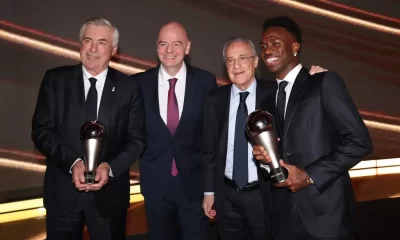
 Sports24 hours ago
Sports24 hours agoFIFA Best Awards 2024: Vinicius Jr Named The World’s Best Men’s Player
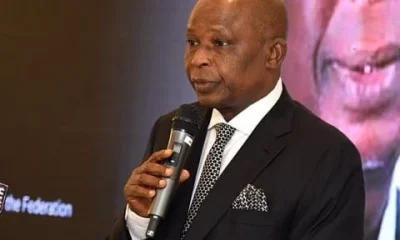
 Top Stories4 hours ago
Top Stories4 hours agoTax Reform: AGF Fagbemi To Meet Senate Today

 Sports4 hours ago
Sports4 hours agoSerie A: Lookman credits Atalanta for rise to stardom
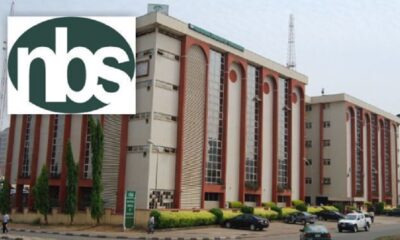
 Business and Brands4 hours ago
Business and Brands4 hours agoHackers gain control of NBS website
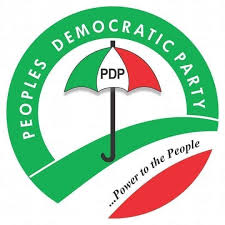
 News5 hours ago
News5 hours agoDon’t pass Tinubu’s proposed 2025 budget, it’s anti-people – PDP to NASS
